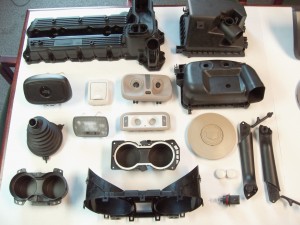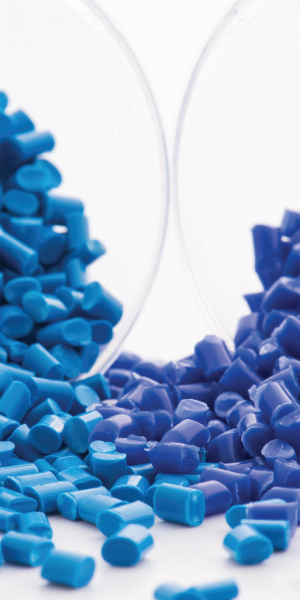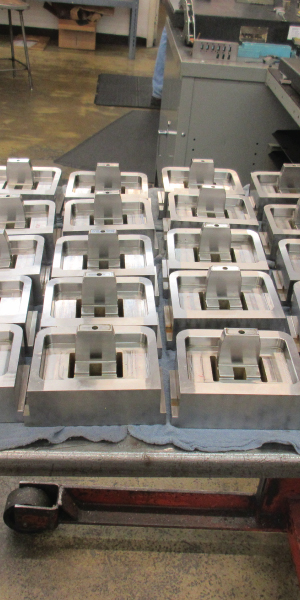
Best 10 Injection Molding Defects And How To Fix Them
Making injection models is both a craftsmanship and a science. Abnormal amounts of specialized skill and tender loving care are required to keep little errors from costing organizations huge cash with ass-production of novel parts.
Counteracting such a situation is about exceptionally capable design. This article discusses some of the molding defects that can occur in a part during injection molding, and ways to fix and avoid them. Design shortcomings we will discuss include:
- Flow Lines
- Sink Marks
- Vacuum Voids
- Surface Delamination
- Weld Lines
- Short Shots
- Warping
- Burn Marks
- Jetting
- Flash
Most mistakes are caused by nescient personnel without the necessary experience or the right tools at their disposal. Conversely, creative solutions and ingenuity abound in personnel with the right experience and the correct combination of hardware and software. Finding the right team of people with relevant expertise is the most important part of the process.
Flow Lines
Description: Flow lines are streaks, patterns, or lines – ordinarily off-toned in shading – that appear on the prototype part as an outcome of the physical path and cooling profile of the liquid plastic as it flows into the injection mold tooling cavity. Injection molded plastic starts its adventure through the part tooling by means of a passage area called a “door.” It then courses through the device hole and cools (in the end solidifying into a strong solid).
Causes: Flow line deformities are created by the differing speed at which the liquid plastic streams as it alters course through the forms and curves inside the shape device. They likewise happen when the plastic courses through areas with changing wall thickness, or when the injection speed is too low making the plastic harden at various velocities.
Remedies:
- Increase injection speeds and pressure to the ideal level, which will guarantee the cavities are filled appropriately (while not enabling the liquid plastic time to begin cooling in the wrong spot). The temperature of the liquid plastic or the mold itself can likewise be lifted to guarantee the plastic does not chill off adequately to bring about the imperfection.
- Round corners and areas where the wall thickness changes to keep away from sudden alters in course and stream rate.
- Find the entryway at a spot in the apparatus depression with thin walls.
Sink Marks
Description: Sink imprints are little holes or miseries that create in thicker territories of the injection mold when shrinkage happens in the inward segments of the completed item. The impact is to some degree like sinkholes in geology, yet brought about by shrinkage instead of disintegration.
Causes: Sink imprints are frequently brought on when the cooling time or the cooling system is lacking for the plastic to completely cool and cure while in the shape. They can likewise be brought on by deficient weight in the hole, or by an inordinate temperature at the entryway. All else being equal, thick sections of the injection molded part take longer to cool than thin ones and so are more likely to be where sink marks are located.
Remedies:
- Form temperatures ought to be brought down, holding pressure expanded, and holding time drawn out to take into consideration more satisfactory cooling and curing.
- Decreasing the thickness of the thickest wall areas will likewise guarantee speedier cooling and help diminish the probability of sink imprints.
Vacuum Voids
Depiction: Vacuum voids are pockets of air caught inside or near the surface of an injection mold.
Causes: Vacuum voids are regularly brought on by uneven solidification between the surface and the internal areas of the model. This can be disturbed when the holding pressure is insufficient to condense the molten plastic in the mold (and thereby force out air that would otherwise get trapped). Voids can also develop from a part that is cast from a mold with two halves that are not correctly aligned.
Remedies:
- Find the entryway at the thickest piece of the trim.
- Change to a less thick plastic. This will guarantee that less gas is caught as air can escape all the more quickly.
- Increment holding weight and in addition holding time.
- Guarantee that form parts are impeccably adjusted.
Surface Delamination
Description: Surface delamination is a condition where thin surface layers show up on the part because of a contaminant material. These layers seem like coatings and can for the most part be peeled off (i.e. “delaminate”).
Causes: Foreign materials that find their way into the liquid plastic separate from the completed item on the grounds that the contaminant and the plastic can’t bond. The fact that they can’t bond not only has an effect on the presence of the mold additionally on its quality. The contaminant acts as a localized fault trapped within the plastic. An over-dependence on mold release agents can also cause delamination.
Remedies:
- Pre-dry the plastic appropriately before embellishment.
- Increment the form temperature.
- Smooth out the corners and sharp turns in the form configuration to evade sudden changes in liquefy stream.
- Concentrate more on the discharge component in the form configuration to decrease or dispense with the reliance on shape discharge operators.
Weld Lines
Description: Weld lines are in reality more like a plane than a line that shows up in a section where liquid plastics meet each different as they spill out of two distinct parts of the shape.
Causes: Weld lines are brought on by the deficient holding of at least two stream fronts when there is fractional hardening of the liquid plastic.
Remedies:
- Raise the temperature of the mold or liquid plastic.
- Increment the injection speed.
- Adjust the design for the flow pattern to be a single source flow.
- Switch to a less viscous plastic or one with a lower melting temperature
Short Shot
Depiction: As the term suggests, short shots can be portrayed as a circumstance where a molding shot misses the mark. This means that the molten plastic for some reason does not fully occupy the mold cavity or cavities, resulting in a portion where there is no plastic. The finished product becomes deficient because it is incomplete.
Causes: Short shots can be created by various things. Erroneous alignment of the shot or plasticizing limits can bring about the plastic material being insufficient to fill the depressions. In the event that the plastic is excessively thick, it might cement before completely involving every one of the holes and result in a short shot. Deficient degassing or gas venting systems can likewise bring about short shots since air is caught and has no real way to get away; plastic material can’t possess the space that air or gas is occupying.
Remedies:
- Select a less viscous plastic with higher flowability. This plastic will fill the hardest-to-reach cavities.
- Increase mold or melt temperature so as to increase flowability.
- Account for gas generation by designing the mold so that gas is not trapped within the mold and is properly vented.
- Increase the material feed in the molding machine or switch to a machine that has a higher material feed in the event that the maximum material feed has been reached.
Warping
Description: Warping (or warpage) is the misshaping that happens when there is uneven shrinkage in the diverse parts of the formed segment. The outcome is a curved, uneven, or twisted shape where one was not planned.
Causes: Warping is normally brought on by non-uniform cooling of the form material. Diverse cooling rates in various parts of the shape make the plastic cool distinctively and in this manner make inside burdens. These burdens, when discharged, prompt distorting.
Remedies:
- Ensure that the cooling time is sufficiently long and that it is slow enough to avoid the development of residual stresses being locked into the part.
- Outline the mold with uniform wall thickness thus that the plastic streams in a solitary course.
- Select plastic materials that are less inclined to contract and distort. Semi-crystalline materials are for the most part more inclined to twisting.
Burn Marks
Depiction: Burn imprints are stains, normally rust hued, that show up on the surface of the injection models.
Causes: Burn imprints are brought about either by the degradation of the plastic material because of extreme warming or by injection speeds that are too quick. Burn marks can likewise be brought about by the overheating of caught air, which cuts the surface of the shaped part.
Remedies:
- Lessen injection speeds.
- Streamline gas venting and degassing.
- Reduce mold and melt temperatures.
Jetting
Depiction: Jetting alludes to a circumstance where liquid plastic neglects to adhere to the form surface because of the speed of infusion. Being liquid, the liquid plastic sets in an express that demonstrates the wavy folds of the fly stream on the surface of the infusion shaped part.
Causes: Jetting happens for the most part when the liquefy temperature is too low and the consistency of the liquid plastic turns out to be too high, in this manner expanding the resistance of its course through the shape. At the point when the plastic interacts with the shape dividers, it is quickly cooled and the consistency is expanded. The material that courses through behind that thick plastic pushes the gooey plastic further, leaving scratch blemishes on the surface of the completed item.
Remedies:
- Increment form and dissolve temperatures.
- Increment the extent of the entryway so that the infusion speed turns out to be slower.
- Improve entryway configuration to guarantee satisfactory contact between the liquid plastic and the shape.
Flash
Depiction: Flash is a molding imperfection that happens when some liquid plastic breaks from the form hole. Commonplace courses for escape are through the separating line or ejector stick areas. This expulsion cools and stays appended to the completed item.
Causes: Flash can occur when the mold is not clamped together with enough force (a force strong enough to withstand the opposing forces generated by the molten plastic flowing through the mold), which allows the plastic to seep through. The use of molds that have exceeded their lifespan will be worn out and contribute to the possibility of flash. Additionally, excessive injection pressure may force the plastic out through the route of least resistance.
Remedies:
- Increase the clamp pressure to ensure that the mold parts remain shut during shots.
- Ensure that the mold is properly maintained and cleaned (or replaced when it has reached the end of its useful lifespan).
- Adopt optimal molding conditions like injection speed, injection pressure, mold temperature, and proper gas venting.
A large number of the defects mentioned above can be prevented in the design process by incorporating proper tooling design into the iterative process. Using moldflow software like Solidworks plastics will help you identify ideal gate locations, anticipate air pockets, flow or weld lines, and vacuum voids. Most importantly, it will help you design solutions to these problems ahead of time, so that when it comes to production you do not have to worry about the defects costing you money.








Recent Comments